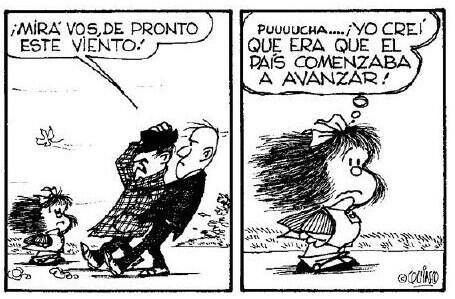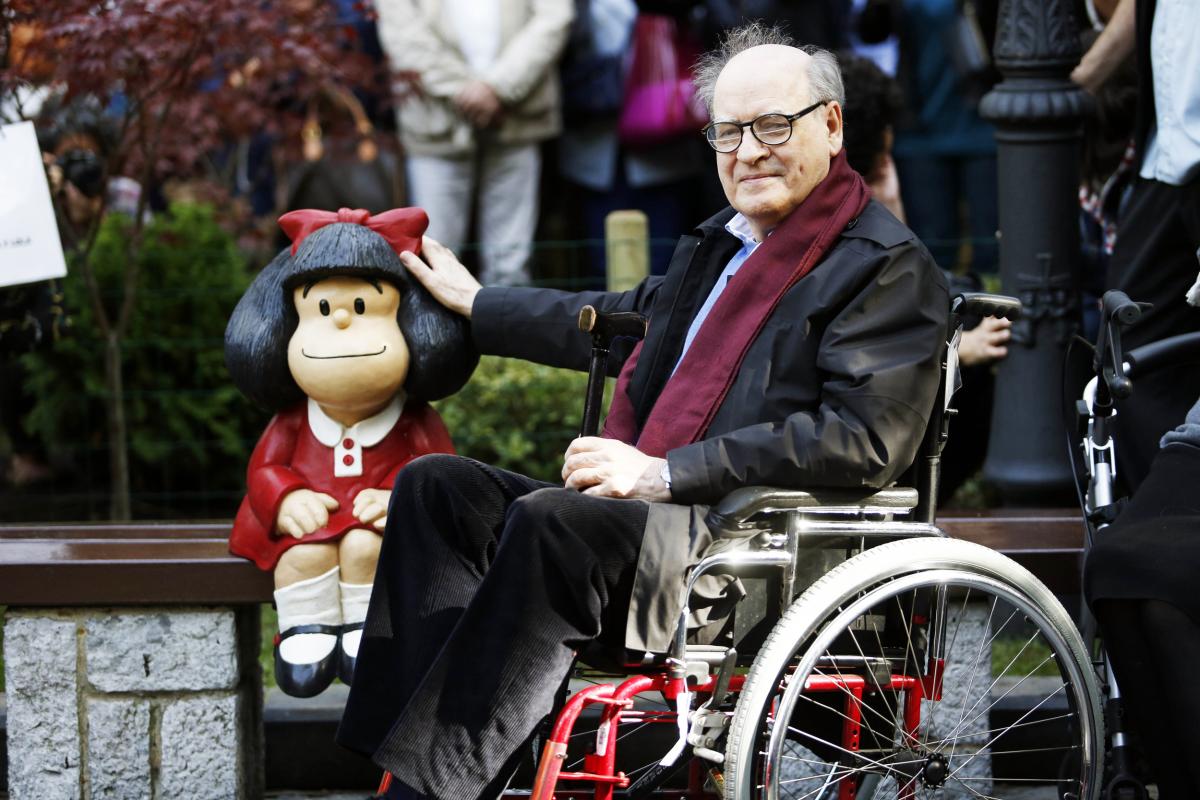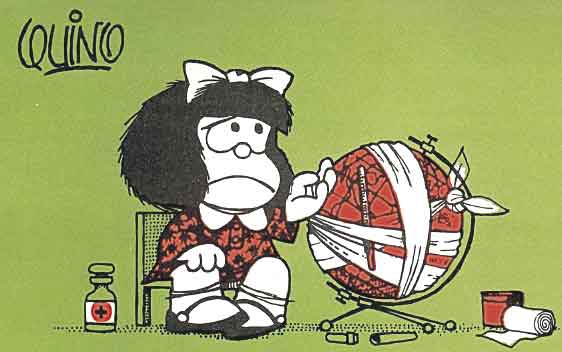Mafalda’s first story was published on 29th September 1964. The idea was originally born out of an advertising proposal suggested to Quino by fellow artist Miguel Brascó. Manufacturing company, Siam Di Tella, was in the process of producing a new line of appliances and was on the hunt for a comic strip that would regularly feature their products and serve their advertisement needs.
Quino quickly snapped up the project and, before long, Mafalda was born. Despite being met with immediate rejection by national newspaper, Clarín, Argentine magazine, Primera Plana agreed to publish Mafalda’s first story on the grounds that the advertising element was removed. Initially only featuring Mafalda and her parents, after moving the comic strip to El Mundo the following year, Quino began to introduce other characters including, Manolito, Susanita, and Miguelito. Mafalda’s mother also became pregnant, and the rest – one could say – is history.

In the nine years that followed, Mafalda found herself moving between papers. Following the closure of El Mundo in 1967, she began appearing on a weekly basis in the magazine, Siete Días Ilustrados, and was soon joined by little brother, Guille, and new friend, Libertad. Despite ceasing publication on 25th June 1973, Qunio continued to draw Mafalda from time to time, and the much-loved little girl occasionally re-emerged to promote human rights causes such as the UNICEF ‘Convention of the Rights of the Human Child’ in 1976.
Despite her disappearance from the newsstand, Quino’s stories had become a cornerstone of Argentine popular culture. Centring themselves on the middle-class trials and tribulations of a six-year old, their striking social and political undertones reached international acclaim. Described by Umberto Eco as ‘representative of the unheard voices of children’, Mafalda’s pontifications on important social ideals and political issues immediately captured the attention of the nation.

Often commenting on the Vietnam war, nuclear weapons and the meaning of life, Mafalda looked beyond the primary school problems of the playground. Rather, she questioned the state of the world at a time when no adult dared to, offering the Argentine population a humorous perspective on current affairs observed through the untarnished eyes of a child.
In doing so, Mafalda became a revolutionary. Rebelling against the world bequeathed by her elders, her words were not only seen as heroic, but are still pertinent today. Her concern for humanity and world peace realised through her innocent curiosity and intellectual wit, transformed her into a cultural heritage symbol of Argentina.
Despite taking early retirement, she is still very much present in the hearts of the hundreds who, today, flock to the Buenos Aires neighbourhood of San Telmo for a photo with the 80cm grinning statue of Mafalda sitting on a bench. Tucked away amongst the bohemian streets of her birthplace, the statue was created by artist Pablo Irrgang in 2009. Currently the most photographed statue in Buenos Aires, it has now become shrouded in flowers and messages in tribute to Mafalda’s late creator.
It has been almost half a century since the birth of Mafalda, who, this year turned 56 years-old. I wonder what Mafalda would make of the world as it stands today? As we find ourselves in rather peculiar times tainted with uncertainly, perhaps we should all take a moment to reflect upon the wise words once spoken by this little South American superstar. A timeless voice to the Argentine nation whose legacy – like that of her creator – will never be forgotten.
















